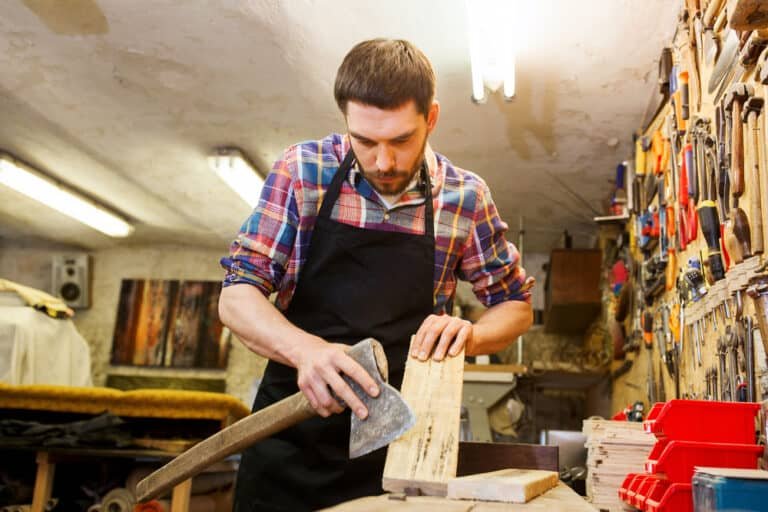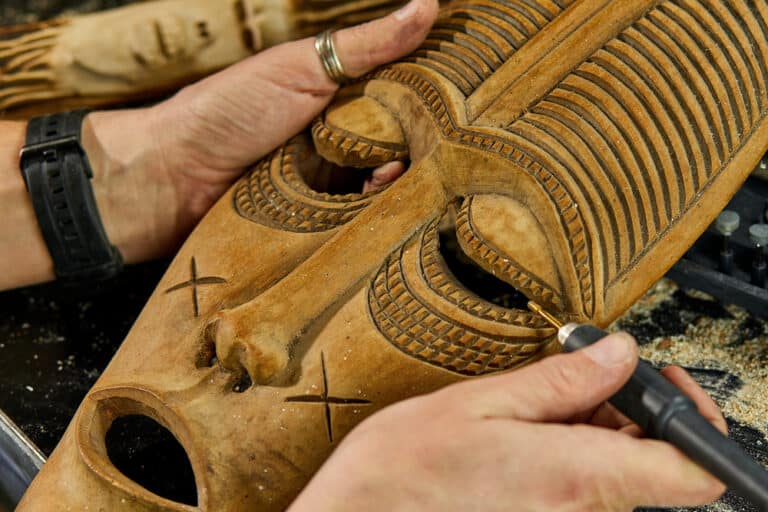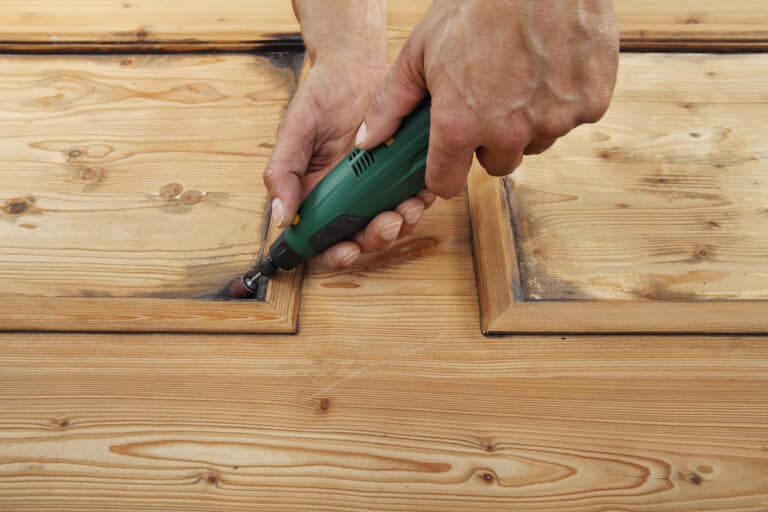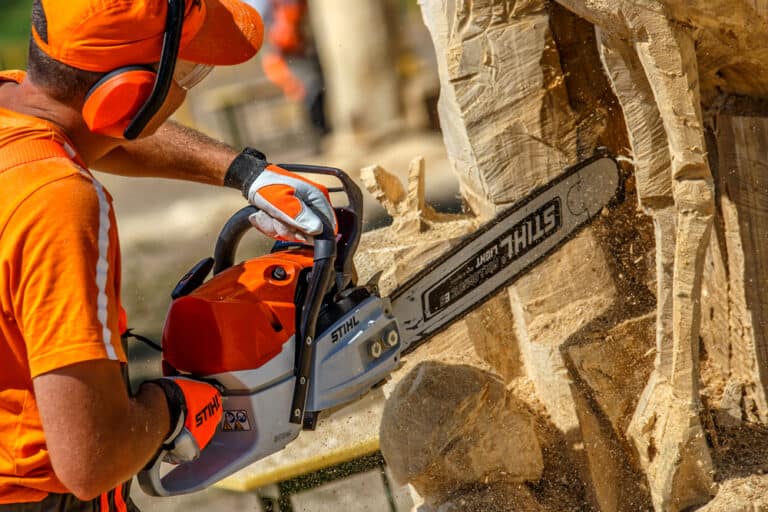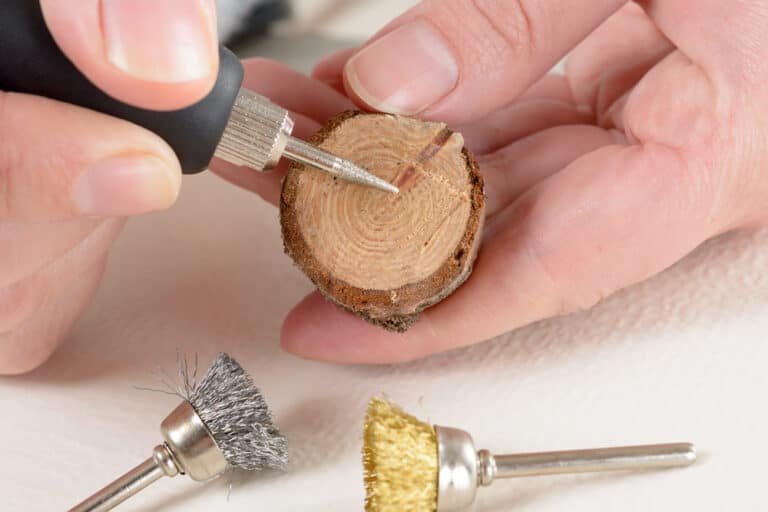Wood carving is not only a rewarding hobby – it is an ancient form of art. With the proper technique, tools, and lots of patience, you can create a beautiful relief or sculpture for your living room or a practical set of wooden bowls and spoons that you and your family can use for years.
To get started, you only need a set of basic but versatile wood carving tools for beginners.
Now, what your beginner wood carving set should comprise depends on the type of items you plan on carving.

But all carvers should have the following tools in their arsenal: multiple types of wood carving knives, various chisels, several different gouges, and a carving mallet. We also highly recommend wearing protective gloves when wood carving.
Read on to learn all about the best wood carving tools for beginners, and check out our recommendations and top picks below.
The Best Wood Carving Tools for Beginners
Wood Carving Knives
Carving knives are a cornerstone of any wood carving. They come in different shapes and sizes, and each type is designed to help you achieve a specific kind of carving.
You may only need one carving knife for simpler projects like spoon or bowl carving. So, if you plan on purchasing only one or two basic wood carving tools, definitely start with a good carving knife.
Depending on the type of knife, you can:
- Remove large sections of wood (sloyd knife) – see our top picks
- Make precise cuts or patterns (chip carving knife)
- Carve out smaller pieces and intricate details (bench knife)
- Scoop out wood and create concave shapes (hook and scoop knives).
The type of wood you plan to use for your carving projects also plays a role in determining which type of wood carving knife you need.
For example, chip and bench carving knives work best with soft wood like basswood, white pine, or butternut.
Knives with steeper bevels are designed for working with hardwoods like oak, walnut, and maple.
Also, bear in mind that hardwoods will dull your carving knives much faster than softwoods. But regardless of the type of wood or projects you’re working on, keeping your knives sharp is essential.
Instead of buying each type of knife separately, we recommend getting a comprehensive set of wood carving knives for beginners. You can check out our top pick below.
Our Recommended Knife Set: BeaverCraft Deluxe Carving Kit S18X
For beginners who want to master a wide range of wood carving techniques, the BeaverCraft S18X wood carving kit is an excellent choice.
The set includes eight tools:
- A small sloyd knife
- A big roughing knife
- A whittling tool
- A detail knife
- Two chip carving knives
- A spoon-carving knife
- A short bent gouge
This wood carving set comes with everything a beginner could need.
We also love that each tool has a quality walnut handle that looks beautiful and, most importantly, feels comfortable in hand.
While some users may prefer lacquered handles, we recommend unvarnished handles like these to beginners as they provide a better grip and will stay smooth if your hands get sweaty.
To top it off, the instruments come in a genuine, thick leather case that helps protect both the knives and your hands.
As a bonus for beginners, the kit includes strop leather, a polishing compound, and bandages.
Wood Carving Chisels
Chisels are sharp carving tools that can have a flat or a beveled edge. They are designed to cut directly into wood and are typically used with a mallet.
This tool combination – a chisel and a mallet – creates an efficient method for quick and precise wood removal.
In addition to multiple types of wood carving knives, beginners should have a variety of chisels to work with.
This is because these carving tools are versatile but easy to use. With the right chisel, you can rapidly rough out wood and carve fine details like sharp grooves for reliefs.
Standard-sized chisels are ideal for removing larger pieces of wood, while micro chisels are great for detail work.
They are used on both smaller items like sculptures and reliefs, and larger projects like furniture.
Wood carving chisels are, in general, much better suited for general wood carving than precision sculpting.
Due to their flat design, it’s easy to drive them into the wood too much, especially for beginners.
We recommend starting with larger chisels before moving on to micro chisels meant for detail work.
Carving Gouges
Gouges come in various shapes and sizes. They’re very similar to chisels, but the major difference is that gouges have rounded or curved blades, whereas chisels have flat blades.
As you can infer from their design, gouges are used for creating small or large hollows or grooves in the wood.
Like chisels, they’re used with a mallet, allowing for quick and easy removal of excess wood.
They’re especially useful for removing wood from a flat surface – where standard flat chisels would dig in the wood.
Carving gouges are ideal for projects that require precise, smooth grooves.
They also allow you to create curved edges, concave cuts, and circles without digging into the wood.
They’re great for carving kitchen utensils and relief carving when you need to reach into awkward or angled areas.
Our Recommended Chisels and Gouges: FLEXCUT Carving Tools Starter Set
This FLEXCUT starter set has six top-quality chisels and gouges for mallet carving hardwoods.
We love it for numerous reasons, but primarily because it suits the needs of both beginners and intermediates at carving, so you’re guaranteed to use it for years to come.
There are two flat chisels, two U-gouges, and two V-gouges. Each tool is razor-sharp right out of the box.
Each instrument also has ergonomic handles made of ash wood, which is strong and dense, so they hold up to being driven by a mallet repeatedly.
If you’d prefer to start with a smaller set, FLEXCUT has a set of four chisels and gouges, and there is also a more comprehensive 10-piece set.
Carving Mallet
A carving chisel or a gouge is practically useless without a wood carving mallet. This cylindrically-shaped tool has a softer striking head than a regular mallet to transfer the power from your strike into the chisel or gouge, not your hand.
Its head is round, so its face can consistently strike the chisel no matter its position, which naturally changes as you work over the surface of your project from various angles.
We recommend lightweight mallets for beginners as they will only tire out your hand slowly.
So what is the purpose of a carving mallet? Glad you asked. Aside from enabling you to make deeper cuts in denser woods and reducing arm fatigue, a mallet can also help you have more control over your carving.
While a carving mallet combined with a carving chisel can help you remove large sections of wood quickly and easily, it can also be used for detail work and precision blows if you move your chisel or gouge slowly and precisely with your mallet.
We prefer flat mallets on the top, as this feature allows them to stand upright when unused.
Recommended Mallet: Schaaf Precision Woodcarving Mallet
Weighing only 12 oz, this small and lightweight Schaaf mallet is comfortable to hold for extended periods.
It has a shock-absorbing urethane head, so it won’t damage or rebound off your chisel or gouge when you strike it. It’s also one of the quietest mallets out there.
Like most mallets for wood carving, the Schaaf mallet has a round shape, allowing you to hit the gouge or chisel from any angle.
Its handle is basic, but this can be good for beginners (and, most carvers).
It’s sturdy and comfortable, albeit a little rough (nothing a touch of sandpaper can’t fix), and won’t cause arm fatigue.
Since it’s light, this mallet is easy to control, allowing precise and accurate chisel strikes.
Carving Veiners and V-Tools
Veiner tools and v-tools are small types of carving tools designed for making deep gouges on the surface of the wood.
Veiners and v-tools are very similar, and the only difference between the two is that the veiners leave U-shaped impressions in the wood, while v-tools leave V-shaped impressions in the wood.
The name veiner comes from the fact that when pushed through the wood, this tool creates a thin groove that resembles a vein.
These tools are ideal for fine and detailed work like creating hair, fur, and other intricate details and decorative lines.
They’re ideal for relief carving and when you need to make deeper cuts than your standard carving gouge allows.
We recommend V-tools and veiners to carvers who want to improve their detailing skills.
Recommended Veiner: PFEIL 1mm Veiner No.11
This PFEIL veiner is pricy but far surpasses other similar tools, so it’s worth the cost.
It’s made of chromium-vanadium steel, so it’s exceptionally durable, and its octagonal hardwood handle is easy and comfortable to hold despite being small.
When you’re ready for some fluting, relief outlining, and delicate and intricate work, definitely get this tool, as it’s sharp and has an extremely pronounced U-shape.
While small, it’s easy to use thanks to its sharp blade that allows for beautifully clean cuts.
It easily creates hollowed-out veins or grooves, and due to its size, it works in places where no other tool will.
Safety Equipment
Wood carving can be immensely rewarding and relaxing, but mistakes will happen from time to time.
Since you’re working with sharp knives, safety starts with safety gloves. A few band-aids won’t hurt, either.
Most protective gloves limit your dexterity because they tend to be stiff.
This is why you’ll often hear about experienced carvers preferring to work without gloves. However, for beginners, good-quality protective gloves really are a must-have.
The trick is to find comfortable and breathable yet highly protective gloves.
Recommended Gloves: NoCry Cut-Resistant Gloves
Certified as having level 5 protection (the highest possible), these cut-resistant gloves are guaranteed to keep your fingers safe while carving.
And despite offering such high protection, they’re pretty soft and comfortable to work with.
While there are other pricier purpose-made gloves, these ones offer excellent cut resistance, great fit, and plenty of flexibility, making them perfect for wood carving.
We, and many other users love them because they’re both durable and comfortable yet affordable.
The one improvement the gloves could benefit from? The first two fingers could have slightly better traction. Other than that, A+.
